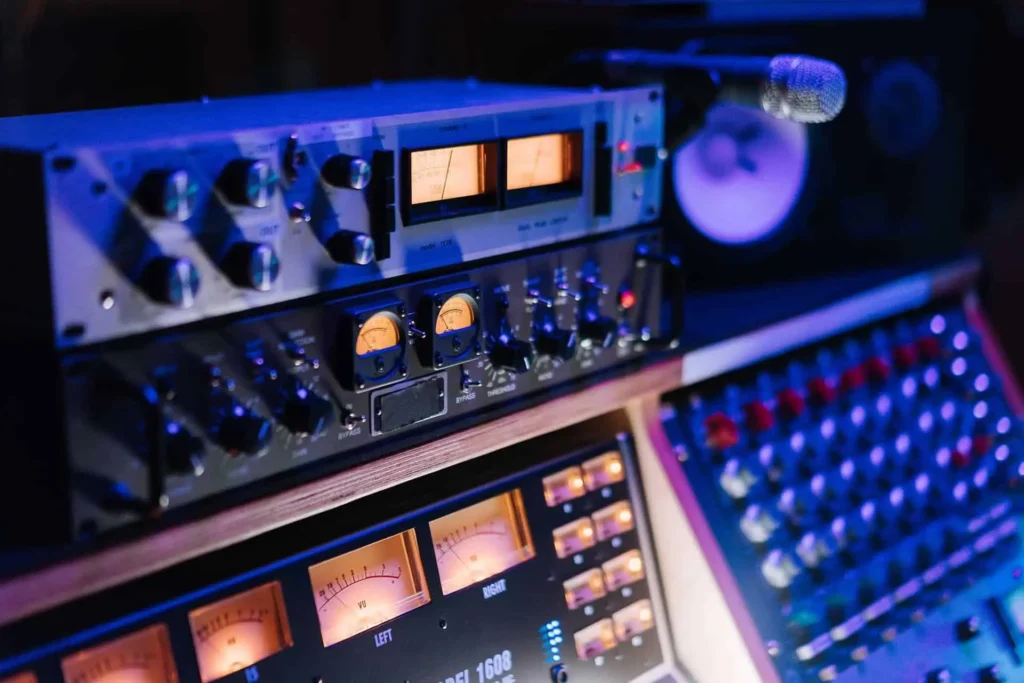Sonic identity has become a pillar of branding in 2025. With the rise of digital content, podcasts and voice assistants, brands today need to be as recognisable to the ear as to the eye. Yet many still underestimate the impact of sound on audience perception and loyalty.
Take the example of the CNRS and its CCSD (Centre pour la Communication Scientifique Directe) platform. By integrating a comprehensive sound charter, this benchmark institution in scientific research has strengthened its image and harmonised its audio communication on platforms such as HAL, EPIsciences and sciencesCONF.
So why can’t brands ignore audio identity in 2025? What are its advantages? And how can it be implemented effectively? This article gives you all the answers, with advice and a case study.





Sound Identity: A Pillar of Modern Branding
What is Sonic Identity?
Sonic identity, also known as audio branding, brings together all the sound elements that contribute to a brand’s universe and identification. It is made up of several key elements which, together, create a real auditory imprint. First and foremost is the sound logo, a short musical sequence or jingle that is instantly recognisable. Brands such as Netflix and Intel have established iconic sound signatures that instantly evoke their world, reinforcing their memorability with the general public. ️ Secondly, the voice and tone of audio messages play an essential role in a brand’s identity. Whether it’s a voiceover used in advertising, a voice assistant or a telephone greeting, the choice of timbre and intonation style helps to shape the brand’s personality and image. Finally, themusical ambience used on different media – in-store, in advertising campaigns or on digital platforms – helps to immerse the consumer in a coherent and above all engaging sound universe. A carefully selected playlist can enhance the customer experience, create a unique atmosphere and influence the emotions felt by the audience. Today, it’s clear that every point of contact between a brand and its audience represents an opportunity to integrate a distinctive sound element. The aim? To encourage instant recognition and establish a strong emotional connection with the audience. By fully exploiting the power of sound, brands can differentiate themselves and make a lasting impression.
Why is Sound Identity Crucial in 2025?
In 2025, a number of trends will reinforce the strategic importance of sound branding for brands, making its adoption essential. Firstly, the explosion in audio formats is profoundly transforming the way content is consumed. Podcasts, short videos, voice assistants and digital advertising all require a strong, recognisable sound identity. This consistency is essential to capture attention and anchor the brand in the public’s mind. Secondly, the increase in time spent on screen-free platforms (voice assistants, audio streaming platforms, podcasts, etc.) is placing audio at the heart of engagement strategies. In a world where interactions are becoming increasingly disconnected from the visual, sound is asserting itself as a powerful lever for emotional connection. Moreover, the gradual decline in visual attention is forcing brands to rethink their communications. Captivating a distracted audience is becoming a real challenge, and sound identity offers an effective solution by stimulating auditory memory. Consequently, ignoring sound identity today means running the risk of gradually disappearing from tomorrow’s marketing landscape. Brands that fail to adapt to these changes risk losing visibility and impact.Case study: How CNRS deployed its Sonic Identity with Brandy Sound
CNRS Context and Challenge
The CNRS, via the Centre pour la Communication Scientifique Directe (CCSD), manages several scientific distribution platforms. The challenge? To create a unified audio identity that would reflect : ✅ Its innovative and scientific positioning ✅ Its reliability and expertise ✅ Its accessibility to a wide audience Before this project, each platform (HAL, EPIsciences, sciencesCONF) used heterogeneous audio supports. The aim was therefore to create a coherent and memorable audio identity.
The strategy deployed
Brandy Sound supported the CNRS in a three-stage process:1. Sound Audit and Needs Analysis
A work of analysis allowed to identify the expectations and the adequate tonality. The researchers and users of HAL needed, above all, a sound atmosphere that evoked scientific rigour without being cold or impersonal.2. Creation of a personalised sound signature
- Development of a distinctive, short but above all impactful sound logo
- Selection of a neutral, modern tone for the voice-overs
- Integration of background music inspired by technological innovations
3. Deployment on all media
Finally, once the sound identity had been validated, it was rolled out in several formats: ️ Introduction of CNRS podcasts ️ Sound design for institutional videos Telephone on-hold messages and official announcementsThe Results: Successful Audio Branding
The impact of integrating an audio identity for the CCSD was immediate and resulted in several major advances. ✔ Firstly, CNRS platforms benefited from increased recognition. Thanks to this specific sound signature, the CCSD’s productions are now easily identifiable, boosting their visibility and reputation with both the scientific and institutional audiences. ✔ S econdly, this harmonisation of scientific communication has made it possible to unify the media and create consistency between the different publications and content disseminated. The sound identity acts as a common thread which, over and above the simple aesthetic aspect, gives the CCSD’s communications a truly recognisable and above all memorable imprint. ✔ Finally, engagement with digital media has intensified. The sound identity, integrated into videos, podcasts and other multimedia formats, has enriched the user experience and strengthened the impact of content distributed online. This immersive dimension encourages interaction with target audiences and optimises retention of scientific messages. Thanks to this sound strategy, the CCSD is no longer content simply to broadcast content: it is creating an auditory experience that will leave a lasting impression and establish its identity as part of an innovative and engaging approach. Read the full case study here.How do you deploy a Sound Identity for your Brand?
The Key Stages of a Sound Identity Strategy
1️ Define the Values and the Sound Universe What emotional message do you want to convey? What tone reflects your brand (dynamic, soothing, futuristic)? 2️ Create the Key Sound Elements A short, impactful sound logo ️ A voice-over in keeping with the brand image Appropriate background music 3️ Broadcast this Identity on All Your Channels Digital ads and YouTube videos Podcasts and radio spots Points of sale, events and telephone hotlines
